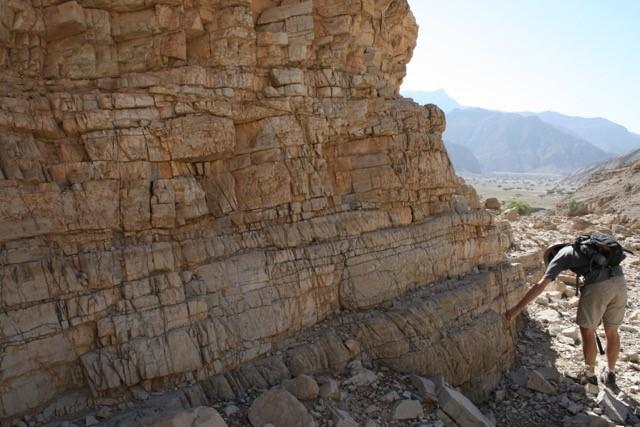
Analysis of rocks unearthed in Oman that were formed in an ancient ocean around the time of Earth’s greatest mass extinction have helped explain why life on Earth took so long to recover. Source: D. Astratti
Scientists have shed light on why life on Earth took millions of years to recover from the greatest mass extinction of all time.
The study provides fresh insight into how Earth’s oceans became starved of oxygen in the wake of the event 252 million years ago, delaying the recovery of life by five million years.
Findings from the study are helping scientists to better understand how environmental change can have disastrous consequences for life on Earth.
Please follow R&D Magazine on LinkedIn
The Permian-Triassic Boundary extinction wiped out more than 90 per cent of marine life and around two thirds of animals living on land. During the recovery period, Earth’s oceans became starved of oxygen – conditions known as anoxia.
Previous research suggested the mass extinction and delayed recovery were linked to the presence of anoxic waters that also contained high levels of harmful compounds known as sulphides.
However, researchers say anoxic conditions at the time were more complex, and that this toxic, sulphide-rich state was not present throughout all the world’s oceans.
The team, led by researchers at the University of Edinburgh, used precise chemical techniques to analyse rocks unearthed in Oman that were formed in an ancient ocean around the time of the extinction.
Data from six sampling sites, spanning shallow regions to the deeper ocean, reveal that while the water was lacking in oxygen, toxic sulphide was not present. Instead, the waters were rich in iron.
The finding suggests that iron-rich, low oxygen waters were a major cause of the delayed recovery of marine life following the mass extinction.
The study also shows how oxygen levels varied at different depths in the ocean. While low oxygen levels were present at some depths and restricted the recovery of marine life, shallower waters contained oxygen for short periods, briefly supporting diverse forms of life.
The precise cause of the long recovery period remains unclear, but increased run-off from erosion of rocks on land – caused by high global temperatures – likely triggered anoxic conditions in the oceans, researchers say.
The study, published in the journal Nature Communications, was funded by the Natural Environment Research Council and the International Centre for Carbonate Reservoirs. The work is a contribution to the UNESCO International Geoscience Programme. It was carried out in collaboration with the Universities of Leeds, Gratz, Bremen and Vienna University.
Dr Matthew Clarkson, of the University of Edinburgh’s School of GeoSciences, who led the study, said: “We knew that lack of oxygen in the oceans played a key role in the extinction and recovery processes, but we are still discovering how exactly it was involved. Our findings about the chemistry of the ocean at the time provide us with a clearer picture of how this complex process delayed the recovery of life for so long.”
Professor Simon Poulton, of the University of Leeds, who co-authored the study, said: “The neat point about this study is that it shows just how critical an absence of oxygen, rather than the presence of toxic sulphide, was to the survival of animal life. We found that marine organisms were able to rapidly recolonise areas where oxygen became available.”




